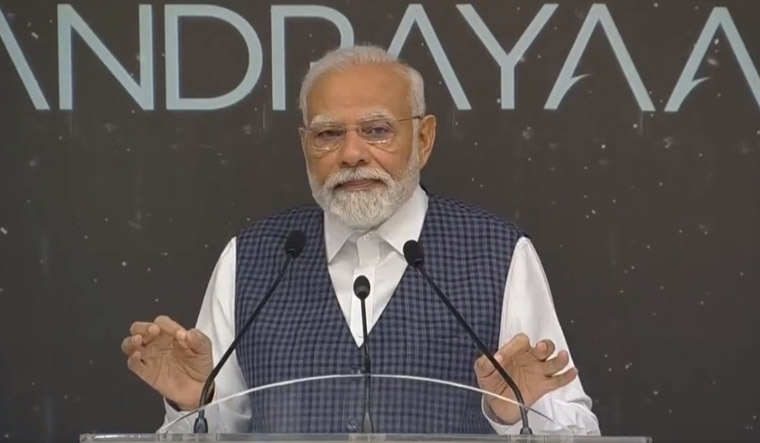August 23, the day when the Vikram Lander of Chandrayaan-3 mission successfully touched down on the Moon's surface, will now be celebrated as National Space Day, declared Prime Minister Narendra Modi today.
Addressing the scientists behind the Chandrayaan-3 mission at the ISRO headquarters in Bengaluru, he said, "India will celebrate August 23 as 'National Space Day' to mark the successful touchdown of Chandrayaan-3 mission's lander.”
PM Modi flew directly down to Bengaluru early on Saturday, after concluding his two-nation visit to South Africa and Greece, to congratulate and meet the ISRO scientists involved in the Chandrayaan-3 mission to the Moon.
In his address, he also announced that the spot where Chandrayaan-3’s lander landed, will be known as ‘Shiv Shakti’.
also read
- What is special about ISRO's Cartosat-3 that did damage assessment of Myanmar earthquake?
- Explainer: How ISRO made significant strides in developing indigenous cryogenic and semi-cryogenic engine technology
- No space programme is possible without electronics: ISRO chairman
- First SSLV launch from Kulasekarapattinam to be in 2027: ISRO chief
- Why successful de-docking of SpaDeX mission is a huge milestone for ISRO?
He also announced that the place where Chandrayaan-2 left its “footprint” in 2019 will be called the ‘Tiranga Point’. “This will be an inspiration for every effort made by India. it will remind us any failure is not final,” he said, referring to the mission's failed soft-landing in September 2019.
He hailed the achievement and also ISRO's role in the country's progress. “This is India, which thinks innovatively and uniquely. This is the India which goes to dark zones and illuminates the world by spreading light.”
“There was a time when we were counted in the third row. Today, from trade to technology, India is being counted among the countries standing in the first row. In this journey from ‘Third row’ to ‘First row’, institutions like ISRO have played a huge role,” Modi said.
He saluted the scientists for “awakening an entire generation” and taking “‘Make in India’ to the Moon”.
He also highlighted the contribution of women scientists in Chandrayaan-3's success.










